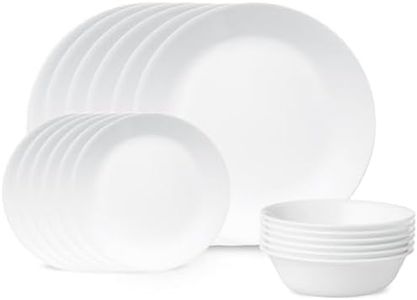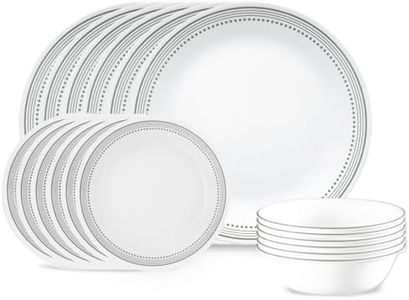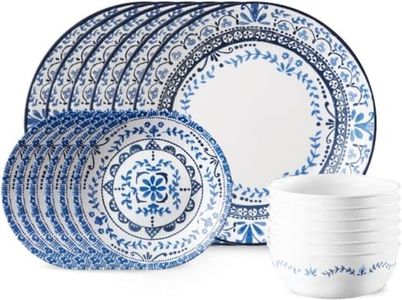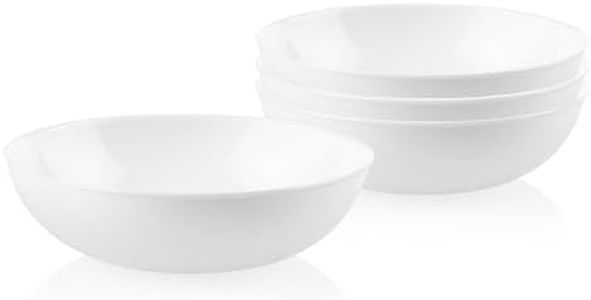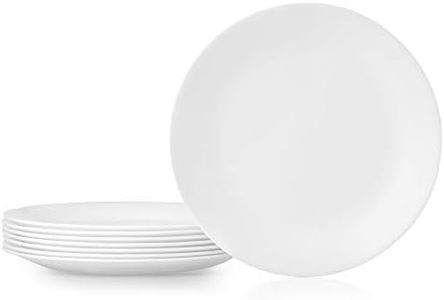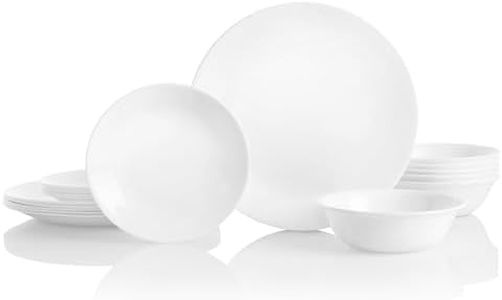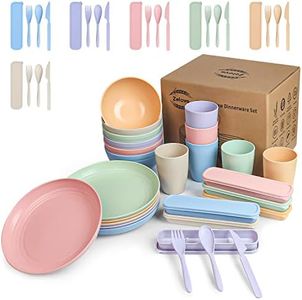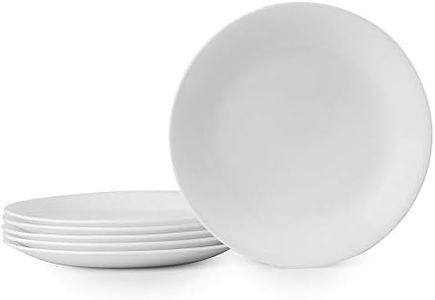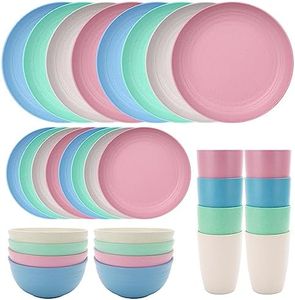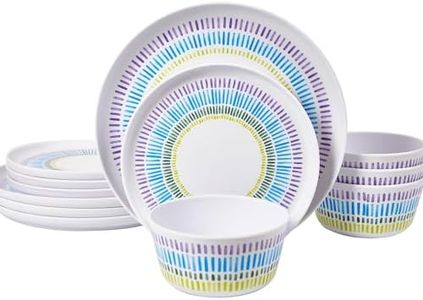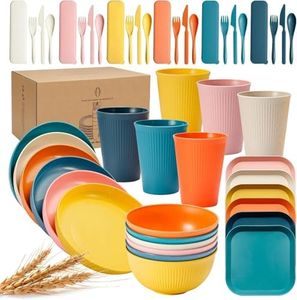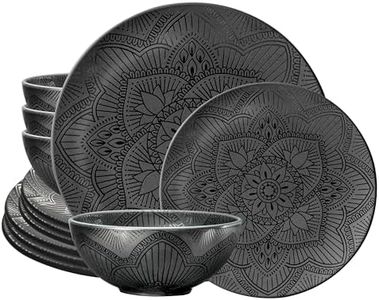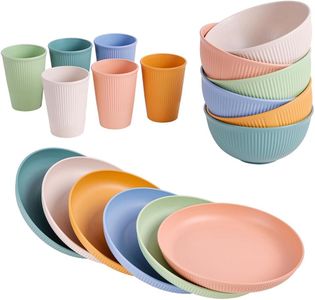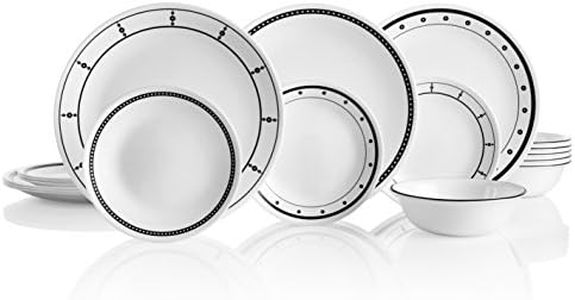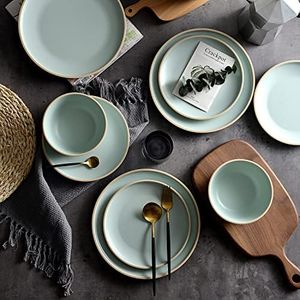We Use CookiesWe use cookies to enhance the security, performance,
functionality and for analytical and promotional activities. By continuing to browse this site you
are agreeing to our privacy policy
10 Best Unbreakable Dishes
From leading brands and best sellers available on the web.Buying Guide for the Best Unbreakable Dishes
When choosing unbreakable dishes, it's important to focus on durability, safety, and practicality. These dishes are great for families, outdoor activities, or anyone who wants a worry-free dining experience. There are several materials and features that can make dishes less likely to break, so understanding these differences will help you pick the best dishes for your lifestyle and usage needs.MaterialThe material of an unbreakable dish is what makes it resistant to breaking or chipping. Common materials include melamine, plastic, stainless steel, and silicone. Melamine and plastic are lightweight and come in many colors and shapes, making them a favorite for kids or picnics, but might stain or scratch over time. Stainless steel is extremely tough, doesn’t break or chip, and is easy to clean, but it can be heavier and may not have an elegant look. Silicone is often used for collapsible bowls and plates, offering flexibility and heat resistance, but is usually less common for complete dinnerware sets. When selecting, think about where you’ll be using the dishes most—indoors, outdoors, camping, for kids, or everyday meals.
WeightThe weight of the dishes impacts how easy they are to handle, transport, and store. Lightweight options, often found in plastic and melamine, are easy for children to use and great for carrying around outdoors, but they can slide easily and may not feel as 'premium' as heavier types. Heavier options, like stainless steel, feel sturdy and stable but may not be as portable. Consider who will use the dishes—children, elderly family members, or for on-the-go purposes—and choose a weight that matches your needs.
Temperature ResistanceThis tells you how well the dishes handle hot or cold foods and whether they’re safe for the microwave or dishwasher. Some plastics can warp or release chemicals at high temperatures, while melamine generally shouldn’t be used in the microwave but is dishwasher safe. Stainless steel can handle hot and cold foods well and often goes in the dishwasher, but not the microwave. If you often reheat meals or want convenience with cleaning, check that your dishes can handle the way you’ll use them.
Safety and Food-Grade CertificationsSafety refers to whether the dishes are made from materials that won’t leach harmful substances like BPA or other chemicals. Look for food-grade certifications to ensure safety, especially if kids will use the dishes or if you’ll serve hot foods. Generally, dishes labeled as 'BPA-free' and meeting food safety standards are good picks. Always check product labels if safety is a top concern.
Design and StyleDesign and style can range from simple and functional to colorful and decorative. If you’re using the dishes for daily family meals or outdoor activities, you may prefer bright, fun options that are easy to keep track of and don’t show scratches easily. For more formal or versatile use, subtle colors and smoother finishes might be preferable. Think about the setting where you’ll use these dishes—casual, outdoor, or mixed use—and select a design that adds to your enjoyment and suits the environment.
Stackability and Space-SavingStackability refers to how easily the dishes can be stored on top of each other, saving space in your kitchen or backpack. Dishes that stack neatly are more convenient for small kitchens, camping, or picnics. Look for dishes marketed as ‘nesting’ or with straight sides for the best space savings. Choose this feature if you need to maximize storage or plan to carry dishes on the go.
